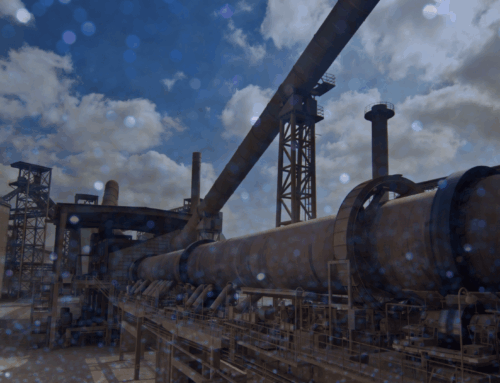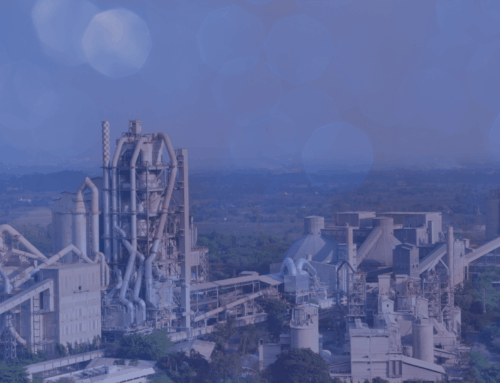LNG terminals face numerous risks and challenges in their daily operations. This includes the need to ensure the safe and efficient handling of LNG, maintain optimal storage conditions, and meet the growing demands of the energy market. In addition, these terminals must also comply with stringent regulations and industry standards while striving to optimize their processes and reduce costs. Furthermore, to achieve these goals, LNG terminals require a comprehensive understanding of their past and present operations. This enables them to make informed decisions and prepare for future challenges.
As a result, data plays a crucial role in the operation of LNG terminals. By collecting, storing, and analyzing vast amounts of data from various sources, terminals can gain valuable insights into their processes. In addition, they can identify areas for improvement and make data-informed decisions. However, managing and leveraging this data effectively requires a robust and reliable solution that can handle the complexity and scale of LNG terminal operations.
This is where an LNG terminal data historian comes in. An LNG terminal data historian is a specialized software system designed to efficiently collect, store, and analyze large volumes of time-series data from LNG terminal processes. Importantly, by implementing an LNG terminal data historian, an LNG terminal can unlock the full potential of their data. It can enable them to monitor and optimize their operations in real-time. Furthermore, by doing this, they can detect and diagnose issues quickly, and make informed decisions based on historical and real-time trends and patterns.
Project Overview: LNG Import Terminal Historian
An import LNG terminal is a complex facility that receives, stores, and regasifies LNG imported from overseas. The process begins with the arrival of LNG carriers at the terminal’s jetty. This is where the LNG is offloaded into storage tanks. Next, the LNG is then pumped from the storage tanks and vaporized using heat exchangers. Additionally, this converts it back into its gaseous state. The regasified natural gas is then metered and transported via pipeline to the gas distribution network.
HanPrism Solution
This LNG terminal sought a powerful data historian solution. They recognize the need for improved data monitoring and analysis to optimize their operations. After careful evaluation, they selected our LNG terminal data historian HanPrism to monitor their extensive site, which comprises of 3 LNG tanks, 12 oil tanks, and an Electric Supervisory & Control System (ESCS). With 10,000+ tags and server redundancy, our solution provided the terminal with the necessary scalability and reliability to handle its operations.
Improved Monitoring with Process Screens
To enhance monitoring capabilities, the team collaborated with the terminal’s experts to create 180 custom process screens. These screens provide a comprehensive view of the terminal’s operations. In addition, this allows operators to make informed decisions and respond promptly to any potential issues. Furthermore, the intuitive interface and real-time data visualization in the LNG terminal data historian have significantly improved the efficiency of the monitoring process.
Key Equipment Monitoring
HanPrism seamlessly integrates with the terminal’s critical equipment, including LNG tanks, oil tanks, and the ESCS. By leveraging the OPC DA interface, the solution ensures accurate and timely data collection from these assets. This enables the terminal to closely monitor the loading, unloading, storage, and handling of LNG and Clean Petroleum Products (CPP). Additionally, the data historian’s advanced capabilities allow the LNG terminal to monitor its blending services for various purposes, such as gas blending for medical and food storage applications. Moreover, the precise monitoring provided by HanPrism ensures the accuracy and consistency of these blending processes, meeting the stringent requirements of downstream customers.
Automated Reporting and Third-Party Data Transmission
A heavily used feature of the historian is its ability to generate automated reports using the HanAra Spreadsheet functionality. This has greatly reduced the manual effort required for reporting, allowing the terminal’s staff to focus on more value-added tasks. Additionally, the solution facilitates seamless third-party data transmission via a Web API, enabling smooth integration with external systems and stakeholders.
Next Steps
By implementing our state-of-the-art LNG terminal data historian, the import LNG terminal has achieved significant improvements in efficiency, safety, and overall operational excellence. The combination of extensive data visualizations, custom process screens, automated reporting, and seamless third-party data transmission has empowered the terminal to optimize its processes and deliver exceptional service to its customers. With the ability to monitor and analyze their past and present operations, the terminal is now better prepared to face the challenges of the future and maintain its competitive edge in the energy industry.
To learn more about how we help the LNG industry, reach out to us today!
HanAra Success Stories
Beyond Reactive Maintenance: A Smarter Approach to Wind Farm Operations
Wind energy has established itself as a reliable renewable power source across the globe. But maintaining a fleet of turbines presents different challenges compared to traditional, centralized power generation facilities. Some of the operational [...]
Biomass Plant Enhances Operational Excellence with HanPrism
In the renewable energy sector, biomass facilities face increasingly complex operational challenges that require sophisticated data management solutions. For one facility, growing compliance requirements and the desire for operational improvement led them to seek [...]
Embracing Change: How a District Energy Organization Transformed Their Data Management with HanPrism
In the world of organizational operations, the concept of "buy-it-for-life" is a rare luxury. While organizations strive for longevity in their tools and solutions, the reality is that technology evolves and so must the [...]









